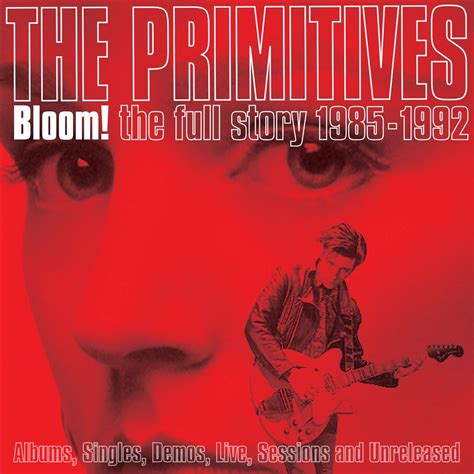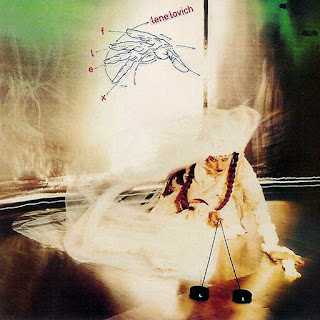Pure + Bonus Tracks
Cherry Red, 2020

THE OVERVIEW
Ah, the “difficult” sophomore album … following a batch of compelling songs as demos, refinements, and finally as their debut album, what do you do for a follow-up? Well, try to break the mold a bit while still relying on what you know you do damn well, apparently.
Released on New Year’s Day, 1989 — one year to the day after their debut album — Pure explores some different approaches, and expands their “jangly airy guitar pop” worldview a bit, but the best songs are the ones that would have sat comfortably on Lovely (and in one case, actually did).
It’s still guitar/bass/drum driven, with Tracy is trying on some new styles within her range, Paul is slowly expanding his songwriting scope, but it is recognizably the same band with — at its core — the same musical approach. Where they are changing things up is mostly to do with mood — embracing some of the darkness in style that one often finds in their lyrics.
Note, for example, the somber way Paul sings “Shine.” Or, for that matter, the world-weary tone Tracy adopts (appropriately) for “Sick Of It.” Despite these more dour choices, there’s still plenty of sunshine here for when the clouds clear away, and it’s all very good indeed.
Despite this record being so much fun to listen to, it didn’t do as well as the band’s debut. It did make into the Top 40 in the UK at number 38, but stalled at number 113 on the US charts (a year after release), and even that was solely due to college radio airplay — why this great record didn’t get mainstream radio spins at least during the summer months, fer cryin’ out loud, must have frustrated the band even more than it does me.
THE MUSIC
The album kicks off with the sing-songy “Outside,” using a simplistic riff and what seems to me like xylophone (!) and cymbal rather than their usual percussion. The floating guitar effects and plaintive singing make for a very low-key song compared to the material on Lovely, but then the ominous bass notes come in and you are served notice that this song isn’t going to suddenly “rock out.” For this band, it’s a bit depressing actually.
Luckily, the next track is what I’d call their most Cocteau Twins-like number, “Summer Rain” — a guitar bed with a lovely lead line, fresh lyrics, a catchy melody and another bit of second guitar while the percussion comes in. Tracy’s doubled vocal returns very effectively, and while the pace remains firmly at mid-tempo, the song builds to a chorus that really captures the spirit of the song.
Frankly, I think they may have outdone the Cocteau Twins on this one! It’s a perfect melding of the two bands.
“Sick of It” is about as close as this band is going to get to punk. The lyrics express their negative judgement on what I have to presume is Los Angeles (joke), while the band sets about rocking pretty hard. If the band grew on you from the first album, this one will be a hit with you.
Then, things take another turn with “Shine” — starting with Paul handling lead vocals, and the use of acoustic guitars. Despite the change of tone, it’s still another example of the band’s primary approach — catchy pop-rock married to ominous (or at least obscure) lyrics.
“Dizzy Heights” starts off with furious riffing and utilizing audio effects and both singers to full effect. This is a group that has a style, but really really wants to switch it up a bit to avoid being called “good, but all the songs are kinda samey.”
Paul returns to his “psychedelic” vocal style to jazz up “All the Way Down” in another catchy exercise that finally brings the bass back in fully. We then get back to Primitives basics and feel-good sunshine pop with “Secrets” — joyous workout with the band at its best. It reminds me of something the Jesus & Mary Chain might have done, especially with the faster tempo of the bonus “Beat Version,” which we’ll come back to shortly.
This is followed by another “typical” Primitives menace-shaded funfest, “Keep Me in Mind.” The melody wanders off from time to time, and the lyrics are again (like most of their songs) about not much in terms of concrete messages or story, but anything that keeps all four members busy for the duration of the number is what I’m here for.
“Lonely Streets” was a popular track on college radio, with its “ooh-ooh” cascades and driving tempo. It threatens to be another sing-songy number like “Outside,” but the tempo changes save it from being a twin to that first song.
Then we try something different again with “Can’t Bring Me Down.” Vocals right up front, with the band firmly behind her. Tracy’s “sassy” style here reminds me of the one-hit-wonder UK band Shampoo and their one hit “We’re in Trouble,” a 1994 UK single.
Following this, a surprise. A re-used song! This version of “Way Behind Me” is straight from the the later editions of the previous album, but to be fair it’s fabulous, and deserved a second spin. The mix here gives everything equal focus as it did on the last album, which hasn’t been the case for most of this album, but it works for this number, at least.
The album proper finishes up with “Never Tell,” another upbeat tune but this time with … gasp! … a carefree upbeat (and metaphorical) lyric with only the lightest touch of vagueness! What the …?
To sum up the album as simply as possible, the group was paying attention to what was going on around them musically (like the “shoegaze” style), and adapted some of their songwriting to bring expanded versatility and influences into their core skill set. The result is varied and excellent.
THE BONUS TRACKS
The original CD version of the album had four bonus tracks — “Noose,” a cover of the Velvet Underground’s “I’ll Be Your Mirror,” a “Beat Version” of “All the Way Down,” and a new song from Paul (at the time going by PJ Court), “I Almost Touched You.” The cassette (!) version of the album only included “Noose” as a bonus song.
Bloom!, on the other hand, includes as many bonus tracks as their were songs on the original album — a whopping 11 extra tracks, kicking off with the far-superior “Beat Version” of “All the Way Down,” which brings the tempo and energy up to the normal Primitives’ enthusiasm levels. This version sounds like something The House of Love (or indeed, many other bands of the very late 80s) would have loved to have covered, rather than the more morose album version.
The organ and handclaps added to the song here really bring it to life and transport it back to the psychedelic 60s, the band’s touchstone influence.
This is followed by an acoustic new version of “Way Behind Me,” similar to the album version but without the (missed) “bop-bop-be-doo” intro. I’ve said it before, but this has “hit” written all over it, and it was in fact on a single — paired (oddly) with the morose version of “All The Way Down,” and the a-side was the album version of the A-Side and the superior “Beat Version” of “All the Way Down.”
“Noose” was such a totally different number from the band that it makes an odd choice for the “lead” bonus track, but that’s not to say it’s bad. Alternating vocals from Paul and Tracy (coming together at points throughout) sound like they wrote and recorded the track immediately after viewing some old-school “spaghetti westerns” — particularly for the opening chords and beginning percussion.
As the song gets going properly, the mood then evolves into their idea for a soundtrack to the 60s Italian “high stakes caper” movie Danger Diabolik!, complete with synth strings! If you’re not familiar with John Phillip Law’s 1968 Italian action movie masterpiece, watch that first before you put this on — your enjoyment of it will be doubled!
Switching up the mood, the next track is that remake of the Velvets single I mentioned. The Primitives’ respectful version of “I’ll Be Your Mirror” is more upbeat and frankly better in most respects, and sounds very credibly like a cover single made around the same time by a girl group of the the original’s era. It’s hard to beat the groundbreaking original version and Nico’s striking vocal, but The Primitives manage to hold their own with an excellent choice of a song to cover.
Following that cover, we’re treated to another — the Rolling Stones’ classic ballad “As Tears Go By” — but rather than pay homage to the original, the band effortlessly turns the song into … a number you might have sworn The Primitives wrote themselves! This should have been put into the original album’s track list — the mood, style and arrangement give a whole new dimension to the song as one of the band’s own “upbeat music with downbeat lyrics” signature style.
The next track, “I Almost Touched You,” really tries hard to be a different sort of number, getting back to the bass dominance we haven’t heard for a while, married to a lyric about an (unsuccessful) creeper and his quest.
The next three tracks offer alternative versions of the album track “Secrets.” The first is the original demo, which grooves just as well, but lacks the nicer intro of the album version. Godlike producer and remixer Zeus B Held finally got his hands on a Primitives track, and his 12” inch keeps the original intents while bringing Paul’s backing vocals up in places, but otherwise keeps the original’s speedy, 60s style intact. He drops some instruments out periodically for showcasing effects, and breaks out some lyrics for repeating/highlighting, squeezing an extra 42 seconds in compared to the original.
The 12” Dub mix of the song gives the rest of us a chance to karaoke this fun number at our next groovy party. For best results, you’d better have your own harmonizing boy-and-girl singers to try and hold your own against the (completely absent) original vocals.
The bonus tracks draw to a close with another fabulous cover, this time the 1957 Lieber-Stroller number “You’re So Square (Baby I Don’t Care),” originally made famous by that Elvis Presley fellah. That bassline must have proven irresistable to new bassist (and producer) Paul Sampson, and he certainly brings the low notes to life. Tracy sometimes has to fight to be heard over the bass-and-guitar attack, but the song works well with her lower register and points back to the influences the band wears on their sleeve.

























Recent Comments